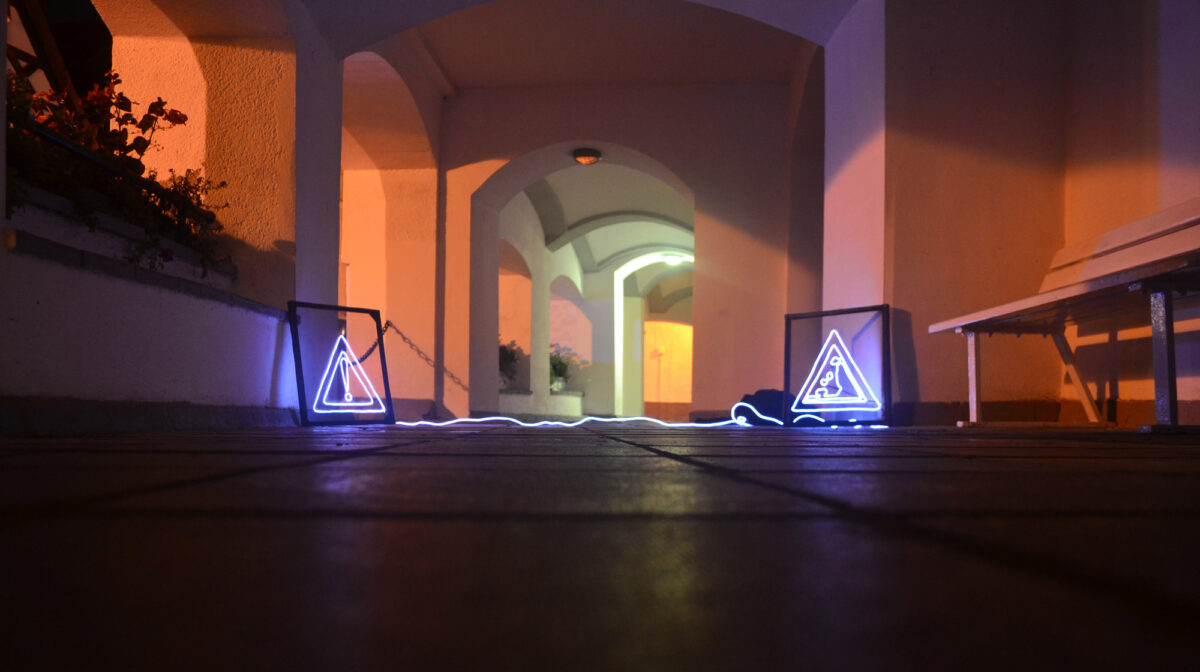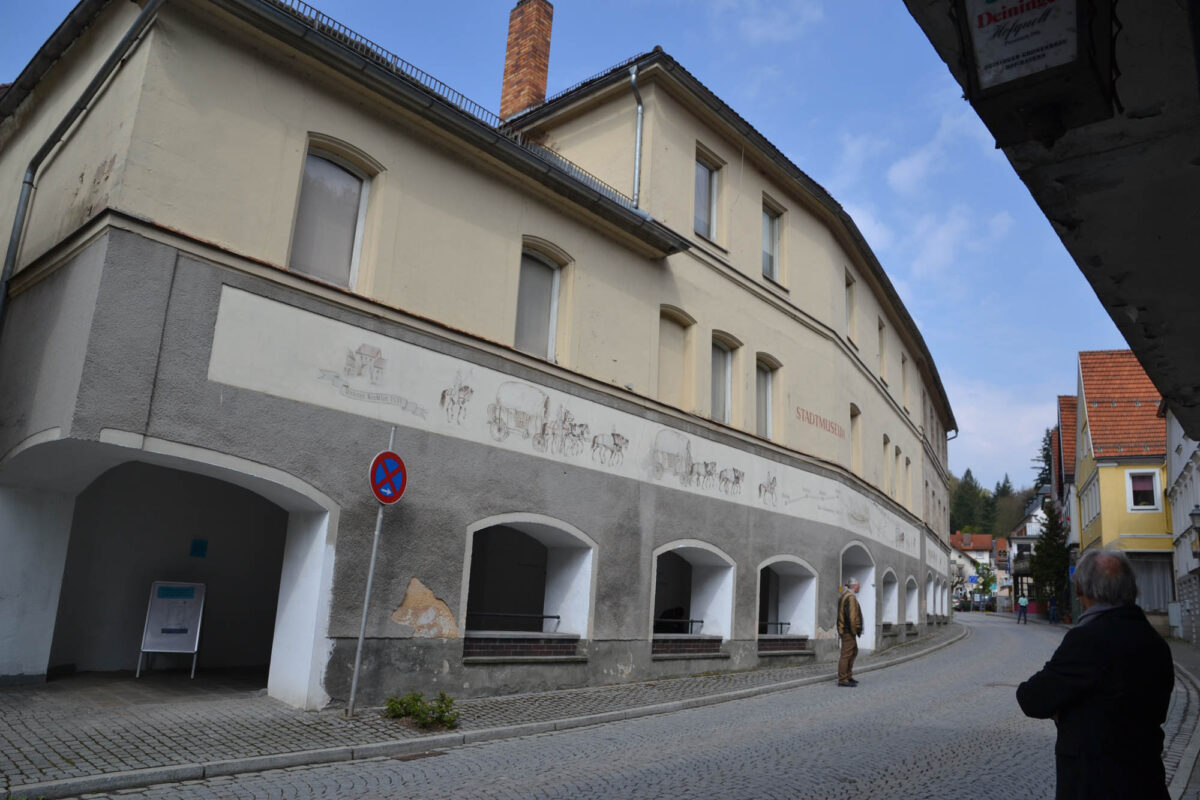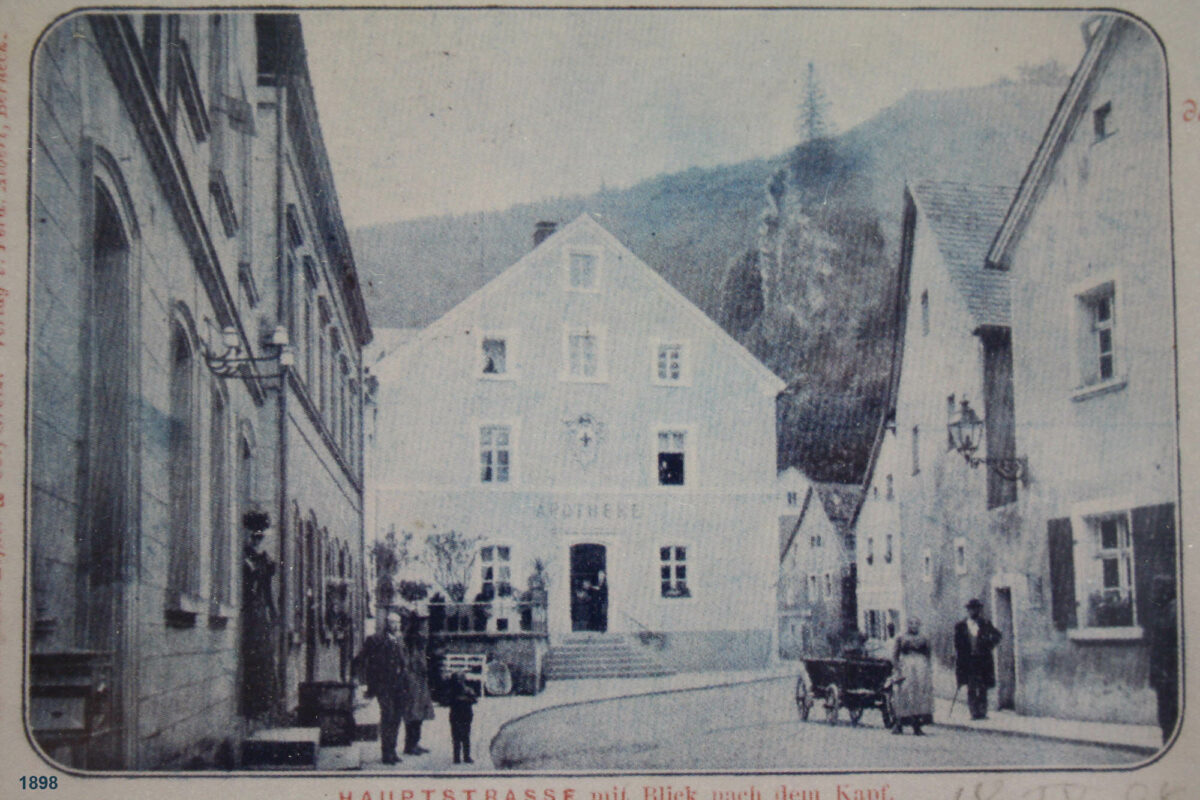Town Museum
Originally built as a coaching house with guest rooms in 1699, the building was turned into regional administration offices in 1844. The building was then used as a police station till 1962 when it was finally converted into the Town Museum of Bad Berneck. The panoramic mural on the façade facing the road depicts the early town history. The ‘secret’ inner courtyard is used during the summer months to house small events. The QR-Tour gives you access to some of the large collection of local historical artifacts and information that the museum used to house before it was closed to the public and the precious items were moved into storage.
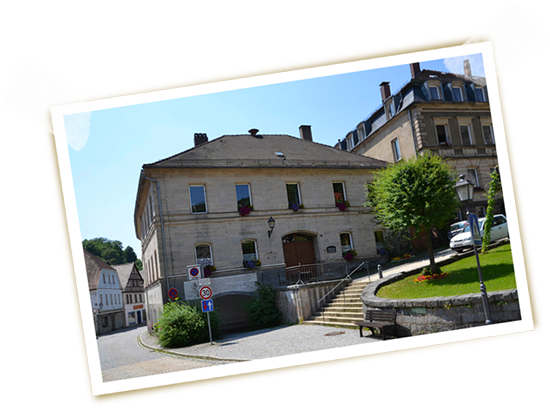
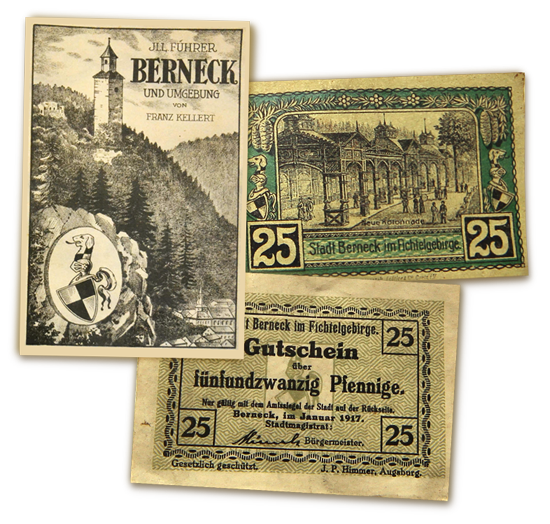
“How important and educational this region must be for the forester and the hunter, as for the miner, how rich a yield it provides to the mineralogist and botanist, and how great the interest it has for the historian. …”
Ludwig, 1810
Town History:
The origins of Bad Berneck date back to the early Middle Ages. At the time of the Carolingians an early settlement named Bibeningen was created at the confluence of the Ölschnitz and White Main Rivers. Remains of the first castle, which protected the kingdom road, are still visible on the Hohenwarte. Modern Bad Berneck was not in existence before the middle of the 12th century, and is viewed as connected to the establishment of Walpotenburg and the Old Palace.
The strategic location of the town remained important throughout the entire Middle Ages. The area dominions were merged in the late Middle Ages, and around 1357 the settlement of Berneck received city rights. This led to a flourishing of crafts, and many guilds thus emerged. Not long after the city survey, the medieval wooden houses were destroyed in 1375 by fire. After further fires in 1692 and 1730, nothing remains of the medieval buildings.
The town’s location on the Ölschnitz was a high flood risk. Devastating floods caused by the mountain streams, such as in 1889, destroyed the buildings again and took people to their deaths. This strategic location also had downsides. Again and again the displaced victims of war moved through the city, several times ravaging it through looting and destruction (1430, 1462, 1632/33 and 1804-1813). But Berneck always rose again like a phoenix from the ashes.
… the Thirty Years’ War also left sad traces behind; and three times it was up in flames to a large extent; 1632, when it was set on fire by the Bavarians, and in 1692 and 1730.
But still all these misfortunes could not suppress or annihilate the diligence with which these good-natured mountain dwellers always worked themselves gradually back.
Ludwig 1810
The exceptionally attractive location of the place and the beauty of the surrounding nature were rediscovered during the Romantic Period, and a recognized health resort arose in the last hundred years. Townsfolk had originally provided goat’s whey cures, and then since the 1930’s made the city a health spa practicing the Kneipp methods of water treatment. In 1950 the city of Berneck was finally recognized as a designated Kneipp Healing Spa, and thus awarded the name “Bad” Berneck im Fichtelgebirge.
The town has grown strongly in the 20th Century, and the so-called Blumenau was born in the valley of the White Main River. Both industrial expansion and a significant influx of displaced migrants after the Second World War have helped lead to this new boom.
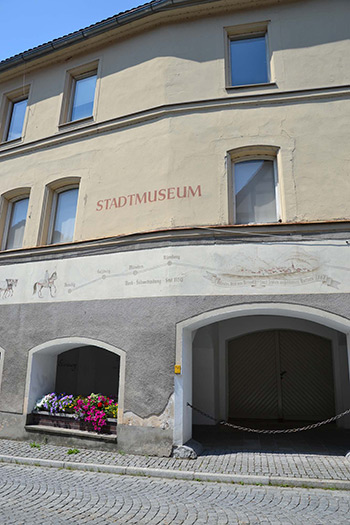
Artist Dave Checkley created light installations in Bad Berneck on two residential visits.
He used ‘lighting wire’ to shape warning signs and placed them at several prominent locations.
Photos: Sabine Gollner
View of the Town
As seen from the Schöne Aussicht, one of the seven hills of Bad Berneck.
by Dominic Day
Secret Inner Courtyard
by Dominic Day
Inside Museum
Some photographs of the inside of the museum, taken a few years ago before it was closed down.
Rotherstrasse
A collection of photographs and postcards that depict the main thoroughfare from the 1800’s onwards.
Town View from above QR 20 (An der Ölschnitz)
Various paintings and photographs showing the view of the town from above.
Travel Diary – 1810
The Coaching House
Only when we reluctantly separated ourselves from these surroundings and outlooks and had laid away the precipitous footpath (which truly requires some caution for travelers from flat countries), and through the streets blew a fine breeze, that we slowly proceeded against concentrated sunrays in the exposed city, feeling the heat with which the unclouded sun pressed us almost to the ground, before we arrived over the small market at the Post-House, where under two shady trees at the entrance, our remaining companions awaited us in the carriage.
Here we found not only coolness, good food and exquisite, refreshing water, as to be expected from these mountain regions, but also good wine, and, what is more than all this, a courteous, friendly reception.
A room-woman of middle-age, who took care of our hospitality and harnesses (I believe the Postmaster was not at home), concerned herself not simply with the entertainment of our bodies, but also catered to our spirits.
Also, some people from the city, who were present just then, came to us with such good-natured courtesy and showed so much love for their region, and all therein that could be of interest to foreigners, that these afternoon hours spent here will always be among the pleasant memories of our trip.
Ludwig, Travel Writer
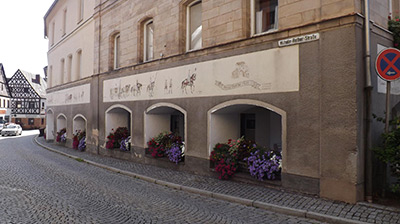
Travel Diary – 2013
The Town Museum
The former Town Museum is easily recognizable due to the many historical pictures on the building’s walls. Men march in armour, whilst horses, heads down, pull along spare carriages. The scene promotes intrigue to the viewer who does not know this was once the site of the old museum.
I wonder why this place has closed down, given Bad Berneck’s rich history.
Matt Bather, History Student in Liverpool, UK
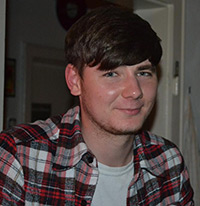
Behind the scenes of the QR-Tour:
Some of the short film sequences were produced with great effort. for the time-lapse film at the Town Museum alone, the British filmmaker Dominic Day spent twelve hours in the courtyard to take a picture every 25 seconds. 14 hours took the computer to process and calculate the huge amount of image material.
“I am interested in exploring the existence of the camera in a space.
Repetition, drone, rotation, orbits, duality, the middle space and deep stillness in movement are themes in my art.
In the Town Museum video, the camera is a whirling dervish, fixed on a single point: moving, yet standing still.
The simple rule is – there is always one point of stillness in the video frame.
Either the camera is still, and the clouds, sun, stars and moon appear to pass by, or the camera moves, but its lens keeps looking at the same point in space.
The point of stillness becomes the temporary centre of the camera’s universe, and time and space are seen passing through this point.
Watching these films, I experience a point of stillness inside myself.“

British filmmaker and time-based artist Dominic Day created filmic work for the QR-Tour on many locations in Bad Berneck and Goldkronach. He is fascinated by natural phenomena such as the stars above the town or the creepy crawlies in the woods.
For many hours he sat high above the town, whether in the castle tower or near one of the many viewing platforms above Bad Berneck, and patiently waited for time to take its course. In his films he plays with time and speed and so reveals the natural beauty of reality.










